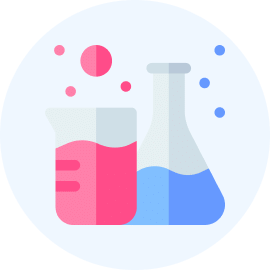CSIR NET Chemical Science Exam > CSIR NET Chemical Science Videos > CSIR NET Crash Course for Chemical Science > Drug Development & Design
Drug Development & Design Video Lecture | CSIR NET Crash Course for Chemical Science - CSIR NET Chemical Science
FAQs on Drug Development & Design Video Lecture - CSIR NET Crash Course for Chemical Science - CSIR NET Chemical Science
| 1. What is the process of drug development? |  |
Ans. Drug development is a complex process that involves the discovery, design, testing, and approval of new medications for use in patients. It typically begins with the identification of a target molecule or pathway for a specific disease, followed by the design and synthesis of potential drug candidates. These candidates are then tested in preclinical and clinical trials to assess their safety and efficacy before seeking regulatory approval.
| 2. What are the different stages of drug development? |  |
Ans. Drug development typically consists of several stages, including target identification and validation, lead compound identification, preclinical testing, clinical trials (Phase I, II, and III), regulatory review, and post-marketing surveillance. Each stage requires careful planning, execution, and evaluation to ensure the successful development of a new drug.
| 3. How long does it take to develop a new drug? |  |
Ans. The timeline for drug development can vary significantly depending on the complexity of the disease, the novelty of the drug target, the availability of suitable lead compounds, and the regulatory requirements. On average, it can take 10-15 years and cost billions of dollars to bring a new drug from discovery to market approval.
| 4. What are the major challenges in drug development? |  |
Ans. Drug development faces several challenges, including high failure rates in clinical trials, complex regulatory requirements, escalating costs, long development timelines, and the need for innovative technologies and approaches. These challenges can hinder the successful development of new medications and limit patient access to potentially life-saving treatments.
| 5. How can computational methods aid in drug design and development? |  |
Ans. Computational methods, such as molecular modeling, virtual screening, and machine learning, play a crucial role in drug design and development. These techniques can help researchers predict the biological activity, pharmacokinetics, and safety profile of potential drug candidates, saving time and resources in the drug development process. By integrating computational methods with experimental data, researchers can accelerate the discovery and optimization of new drugs.

|
Explore Courses for CSIR NET Chemical Science exam
|

|
Signup for Free!
Signup to see your scores go up within 7 days! Learn & Practice with 1000+ FREE Notes, Videos & Tests.
Related Searches
















